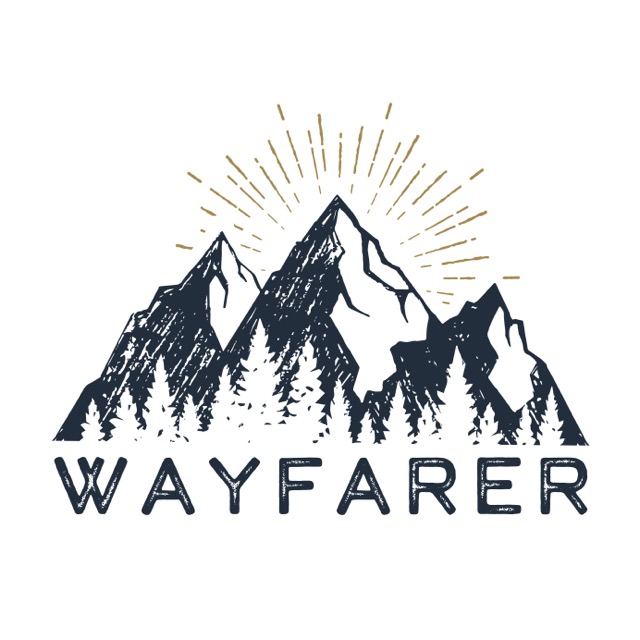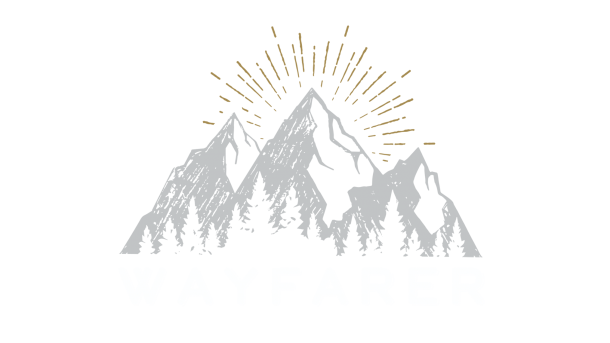by Leslie Van Gelder
This article is featured in the Autumn 2015 issue of The Wayfarer (Vol 4 Issue 2)
Visit our bookstore to purchase an e-edition or print edition. Go to the Store»
When the replica of Lascaux was built into a low hillside near the original cave in Montignac, France, a decision was made to reverse the ‘sense of the visit’, so that the visitor would arrive immediately into the grand Salon of Bulls and be brought almost instantly into the majesty of the art. While a small interpretive chamber precedes entrance into the cave and allows the guides a teaching space to dispel myths and create interest for those who have come simply because in both senses of the word, on a summer’s day they have heard that the replica is “cool,” the immediacy of arriving in the Salon often leaves people breathless from the shock of being in the presence of so much art and at such a grand scale. At the Sistine Chapel, to which it is often compared, one has already walked the whole length of the Vatican to get there. In Lascaux II it is immediate.
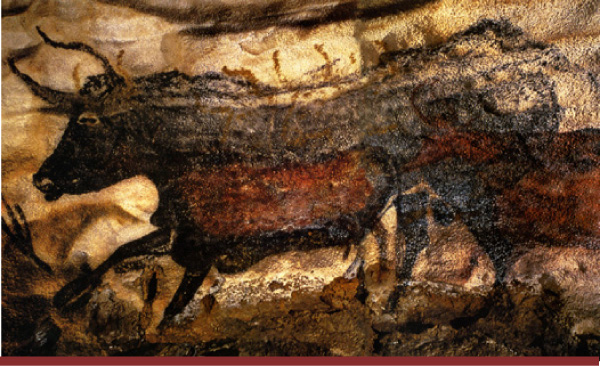
The chamber itself is large and oblong with the shape and feel of a Viking longhouse. Along the high walls run black shadow horses who meet a delicate tribe of deer, their antlers filigreed like tree branches held up on heads raised as if they are sniffing the wind across a snowy plain. Above them thunder spotted white bulls for which the hall is named. White bodies born of limestone brought from the walls by hands holding black manganese with such certainty that the bulls leap from the walls themselves, their legs suspended in flight. In the cacophony of images, some 130 in all, the overall sensation for me has always been an auditory one. Absent the true red bellied Chinese horses and the black shadow sprayed true auroch’s bodies, I hear their hooves and feel their bodies as if I were in the midst again of the wildebeest migration in the Serengeti I once experienced as a fugue of hooves, horns, and dust, when I was a child.
The guides, conscious of time and the next tour which must begin promptly at quatre heure talk through the whole visit. They use their red laser pointers to show the ways in which the artists outlined the shapes of some of the larger animals before they sprayed ochre, probably ground up in their mouths and then either spat in a pattern like our modern day spray paint cans, or through a bone or reed straw for far more accuracy. The skill in the artistry alone is dazzling.
For those for whom this might be their only visit to a cave or a painted cave, the guide’s curation of the exhibit, not unlike taking the tour at the Met, might feel just right. For me, though, after years of working in neighboring caves where we have the time to be able to move more slowly through and to take in not only the images, but the images set inside the soundlessness of the space itself, and to be able to feel the vibrations of our voices set off from the cave walls, it is a very different experience. At Lascaux II on a Sunday at the height of summer tourist season, I couldn’t hope for such resonance.
And yet, we had been lucky. I had brought a group of friends who had been together at a conference in western France for a few days of seeing the caves in the Dordogne. We had arrived late and our tour was the last tour of the day. The group was small, and because our group included two interested adolescents whose response to the cave was so palpable, the guide took her time, letting us linger in the Salon before leading us down into the Axial gallery below.
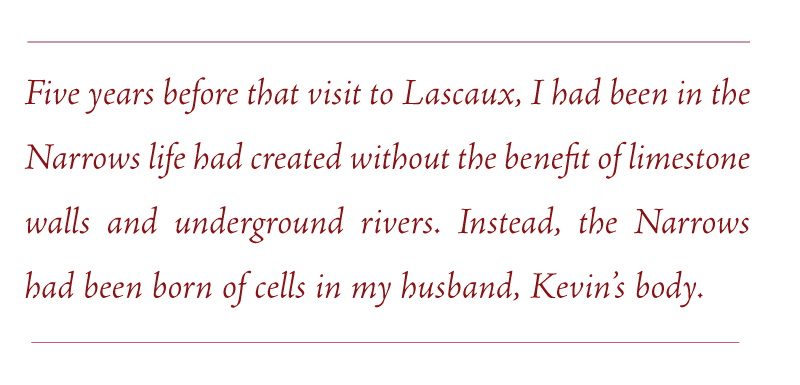
On previous tours with larger groups of people, visiting the Axial gallery had been as pleasant as the London Underground during July rush hour. While the walls of the Salon of Bulls are wide and expansive, in the Axial gallery, the feeling of the narrow stream that would have carved the cave becomes apparent. High walls rise in tight and the floor slopes gradually downward towards the image of a falling horse. Above, the ceiling floats with the bodies of ochred aurochs, horses, including my favorite – a tiny blown black horse tucked innocently into the wall, like a toy left behind after a family who had lived there for 5 generations had sadly moved away. A deer with antlers that in life would have weighed hundreds of pounds graces the right side wall with its graceful head up, facing the wind. Its long back is a single uplifted calligraphic stroke.
Because the walls come in so close and at a height that gives the feeling of being corralled by palace guards, the only place to look is up. In that, the sense of the passage and the art flowing through it is as unmistakable as the feeling one has standing beneath the Milky Way as it curves westward across the night sky.
On this June trip, as the guide was in no rush, she let us stay in the Axial gallery in a spot I would call the Narrows for long enough for the group to grow quiet and simply feel the space. With the vibrations from our voices finally quieting, the closeness of the walls produced a feeling in my chest I knew from the past the feeling of grief. A sort of heartache that has in it both all of the sadness I feel tangled in the colors of joy.
“You feel it?” she said quietly to me in French.
I nodded. “What is it?”
“I do not know,” she shrugged her shoulders in the way only French women can do to convey so much with the same simplicity with which a deer’s whole body had been expressed by a cave artist in single line. “But, I do know this. Even here, in the replica, sometimes, if we stop here for a moment too long, someone in the group will begin to cry. I do not know why.”
She paused for a moment and then began to speak again, more slowly and in English for the benefit of the others who were listening to us.
“The cave, as you know, was discovered in 1940 during the war. It was opened to the public officially in 1948, but in the years after the war many of the survivors of the camps were brought here by the government to see Lascaux. The sense of the visit was different then, so they came through this gallery first and then up into the Salon of Bulls.
The guides who took these groups told me that the experience of the visit with these people was always the same. They would come to this point, where you are standing now,” she gestured to me,” and they would look upwards to the animals on the ceiling of the Salon of Bulls and then from nowhere within them they would weep and weep as if they could not go on.”
One of the men in our group asked her if she knew why this was, and she looked round at the closeness of the walls that could feel like the shoulders of prison guards, or perhaps in a group could evoke the tightness of a railway car going into the dark unknown, and yet when one looked up at a gift of art so clean, so absent of humanity except to have been made by human hands shining above like stars undamaged on a summer’s night, she said, “It is something in the soul. I cannot say. I know only this, that even here, in a replica made only 30 years ago, there are people, like you, who feel what is here, and you, too, you weep.”
“Come, we should move on.”
She motioned to the head of the group to move out past the falling horse painted in an apse in the wall, its body curving downward round a corner of stone, disappearing into darkness.
I looked backwards to the now fading light of the chamber behind us and then followed the others through the absent river of stone, grief still pushing against my chest while above, a tiny black horse stayed behind, as it had for 17,000 years, waiting for the next returning pilgrim to notice its perfect muzzle set against the high stone walls.
***
Five years before that visit to Lascaux, I had been in the Narrows life had created without the benefit of limestone walls and underground rivers. Instead, the Narrows had been born of cells in my husband, Kevin’s body. Cells that had chosen to become a variety of non-small cell lung cancer and, like the river, had carved out a tumor sized space in the left side of Kevin’s brain. There, perhaps in their own way, they were creating chambers emptied of life that could one day be populated with ochred hands and fire bellied horses. For us, in the summer of 2007, our world narrowed down to the geography the cancer created in our lives. Our world travels became limited down to the daily bus trips to Oxford’s Churchill hospital where, over a ten day span of daily radiation to his brain, we followed the bloom cycle of a pair of twinned lilac bushes, one white and the other deep plum, which we religiously stopped to sniff on our arrival and departure from the bus stop every day. A stalwart blackbird perched on a Norfolk pine in a neighbor’s yard and Kevin never failed to greet the blackbird and ask it about its day. And then, each day, with a little less strength than on the previous, Kevin would hold my hand as we walked into the hospital where a grey plastic mask perfectly molded to his proportions like a death mask of yore, would be put over his face while he was attached to a table, utterly unable to move, but still able to breathe, while a high dose of radiation was delivered directly into his brain.
I was not allowed to accompany him into the radiation wing, so I sat with the same group of people, who, like the fellow travellers in the Canterbury Tales, were bound to each other, each carrying a story and each on an individual version of a strangely same pilgrimage to the land cancer had created. This being Oxfordshire, we examined each other’s shoes surreptitiously to answer unspoken questions about class, as one couple wore beautiful bespoke leather shoes highly polished even while he became more ashen by the day, while two others, wore the sturdy industrial shoes given out at a pensioner’s home. In the days ahead we enquired on the basics of life – had you had a good night (no one ever answered this one honestly, nor did I), the traffic on the A34 (always shocking and worthy of shaking one’s head about), and the deep comfort found in a good cup of tea (which though never spoken but was always clearly thought that is should be able to cure everything in life that ails one, including cancer). If not, this radiation business, would be the next best thing, though there was really nothing like a good cuppa and a Belgian bun, now was there?
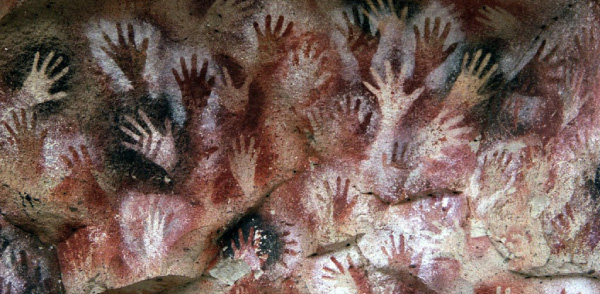
Kevin would emerge from the radiation wing holding onto his new walking stick, swaying a little, and ask if we could go find a cup of tea at the hospital canteen. I would bid farewell to our fellow pilgrims til the next day and we would take the old metal lift up to the canteen where white haired women hefted pewter kettles (no doubt also leftovers from the war and still perfectly serviceable, thank you) filled with proper leaf tea. Kevin would drink his cup, then mine, then get another, and then we would begin the slow trip back home again, where on the bus or over the tea, or climbing back into bed at home, he would tell me of the purple colors he saw while the machine shot his brain full of light. After he was sure he could smell ozone in the air, the same smell he had told me he remembered from his childhood when the ocean waves beat against the stone walls of the New Plymouth jetty or the scent he remembered of the wild waterfalls of Iceland’s Gulfloss.
Later in the month that followed the radiation, he slipped into cavernous spaces within his own mind where he was sure that we had a cat (we didn’t), that the time we were living in was named Elizabeth, that 3:45 was yellow and 4:30 was pink, and that his toes should be hereafter referred to as Number 3. He slept or dozed 23 hours a day and could barely eat when offered food. In the span of eight weeks he eroded from being a vibrant and brilliant man to one who told me that there were disc shapes and baguette shapes in his brain and that his job each day was to sort them into the right categories and make sure that he put them all away correctly. In his own way that summer he must have been re-cataloging his brain, and while some pieces disappeared, never to return again, much did return and by mid Autumn he could eat a little again and the synesthesia had faded along with the discs and baguettes. Instead he was writing archaeology articles, planning his next book, and learning how to walk unaided again.
As Kevin’s world diminished that summer, and all possibility of having a life that had any form of predictability to it, I wrote to a friend trying to capture how I felt. The immobility of our life and Kevin’s illness pressed in at me from one side saying that we could have no future plans and we had to inhabit a constant state of “now.” The need to keep my job and maintain an income for us pressed in from the other side. And my belief that I wasn’t doing my ‘real work’ of being a writer, pushed in from a third side. From other directions I felt the weight of being soul caregiver and morale booster and felt little support in the way that I needed. I now believe that it truly does take a village to support a caregiver who is carrying not only the physical needs, but the emotional weight of sustaining a dying person’s optimism. Optimism and hopefulness are beautiful things but they require far more energy to maintain in the face of despair than one would think.
Across from our bed was a bookshelf built into the wall that held some of my favorite books. I looked to these authors—Barry Lopez and Robert Penn Warren, Rainier Marie Rilke, and Mary Oliver—as if they were old friends and middle of the night companions. When my friend wrote to ask how I felt amidst all of the pressures that life had produced in such abundance in the same way the cancer had proliferated with abundance inside of Kevin, I told him that I felt like a slim volume of poetry on my bookshelf. Sparse, as good poetry always is—just the essentials and nothing more.
Later, in the days just before Kevin died, that same friend would tell me that I reminded him of beach glass—my edges made softer by the relentless battering of the waves—but that what was inside of me had become luminous, and through the softness of the glass I glowed.
That was still a year to come. For now, I was a thin volume of poetry. I was my faded green copy of T.S. Eliot’s The Wasteland eking out an inch of space between the Snow Leopard and Crossing Open Ground. I had bought Eliot for a course in early modern Arts and Ideas during my first year at university. My mother died days after I purchased it and in the November darkness of my first foray into the landscape of grief, I had little to light the way, save for Eliot’s poem which spoke to the cacophony of fragmentation I found inside myself that year.
I did not take the poetry from the shelf as the books around it were wedged in so tightly that to move one was to collapse them all and in some strange way I felt I would be letting down all of those stalwart writers if I were to move them from their companions. On sleepless nights I read J.K. Rowling’s Harry Potter books over and over simply because she had created a perfect world which resembled this one, but like the experience, I, too, was having, her world had far more to do with things like Honor, Love, Fidelity, Truth, and the wonders of Magic, than the world of pewter tea pots and machines that could turn a man’s brain from something whole to a time period, we could only call, at his insistence, Elizabeth.
Words from Eliot’s Wasteland were so familiar that I found them within me whether I meant to invoke them or not. His gift was the expression of the fractured nature of a landscape attempting to grieve itself. Like our April of the brain tumors that year, his April was the cruelest month “breeding lilacs out of the dead land, mixing memory and desire,” while our hospital lilacs mixed with the purples of Kevin’s radiated brain, and I was like Eliot at Margate Sands holding on the feeling as it slipped through my fingers, “I can connect nothing with nothing—” and in the end felt like a heap of broken images kept together by the confining space of the pressures on all sides, which at the time, held me prisoner to a futureless immobility, but also were a great kindness, for once free of the pressures through Kevin’s ultimate death in 2008 (Shantih, Shantih, Shantih, says Eliot) I did not feel myself to be the luminous sea glass my friend saw but knew myself to be the fallen scaps of self that now, absent of what bound them together in the collective support of Kevin, flew off like winter street corner leaves subject to every slight or gust of wind that blew my way.
In the Narrows in Lascaux, I wonder now, did the survivors weep because they felt safe being held by the closeness of the walls and their companions and the familiarity of it all having been held together by the pressure of outside forces? Did they fear, just a little, just as I did, the dissolution that would come in the suddenness of open space?
Or did they simply weep because their experience of humanity had not allowed, for so long, the creation or belief in so much beauty?
Perhaps that alone is enough in this world to make one keep believing that there is something beyond the narrows, something that even in the darkness of a cave, opens up into the light.
___________
Leslie Van Gelder is an archaeologist, writer, and educator based in the Rees Valley of New Zealand. Author of Weaving a Way Home, she studies lines people drew with their hands on the walls of prehistoric caves in France, Spain, and Australia. Her work has been featured in Irish Pages, Earthlines, Antiquity, and the Bellevue Literary Review and a recent TEDx talk on the Archaeology of Intimacy. She is a member of the College of Education Ph.D. faculty of Walden University.
